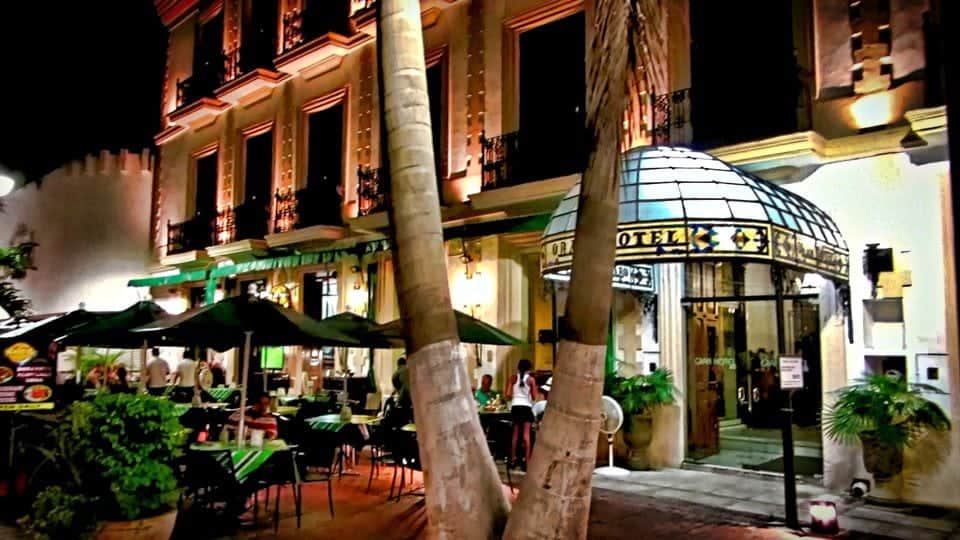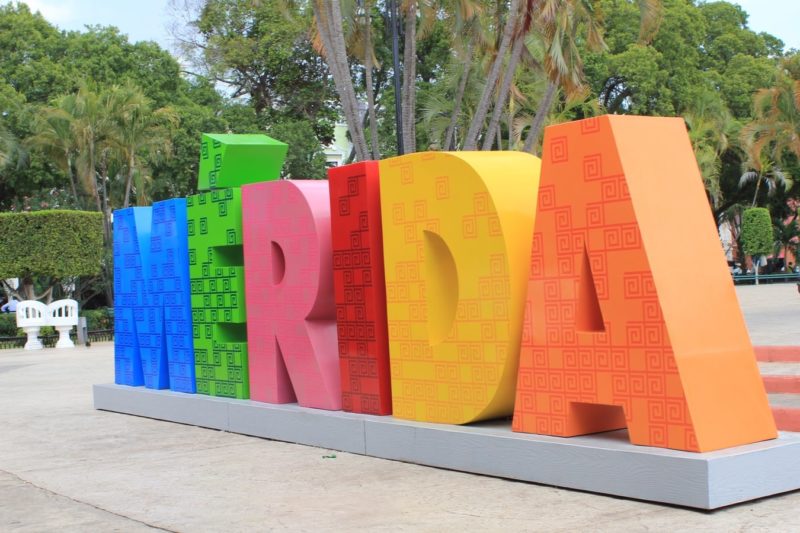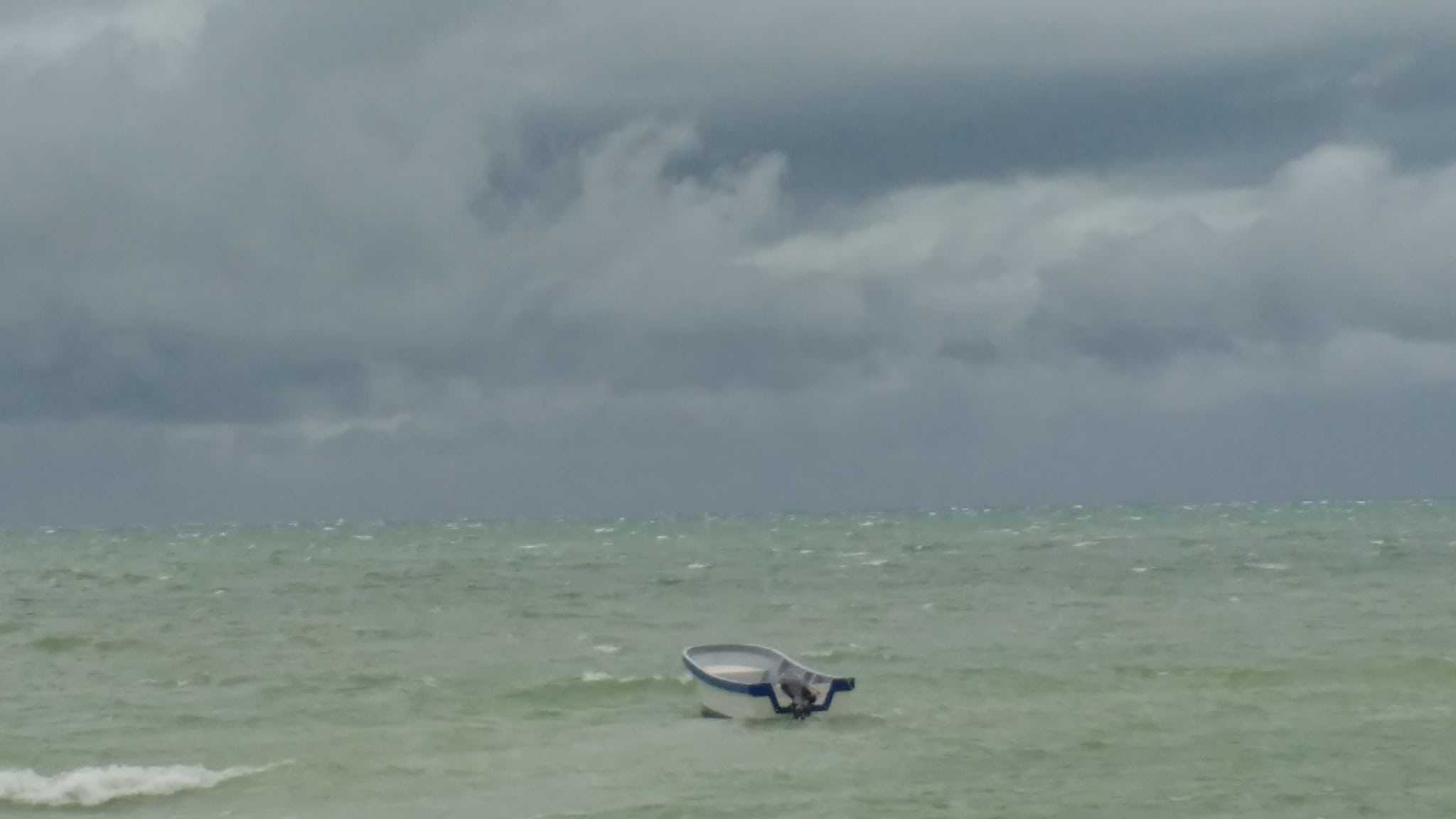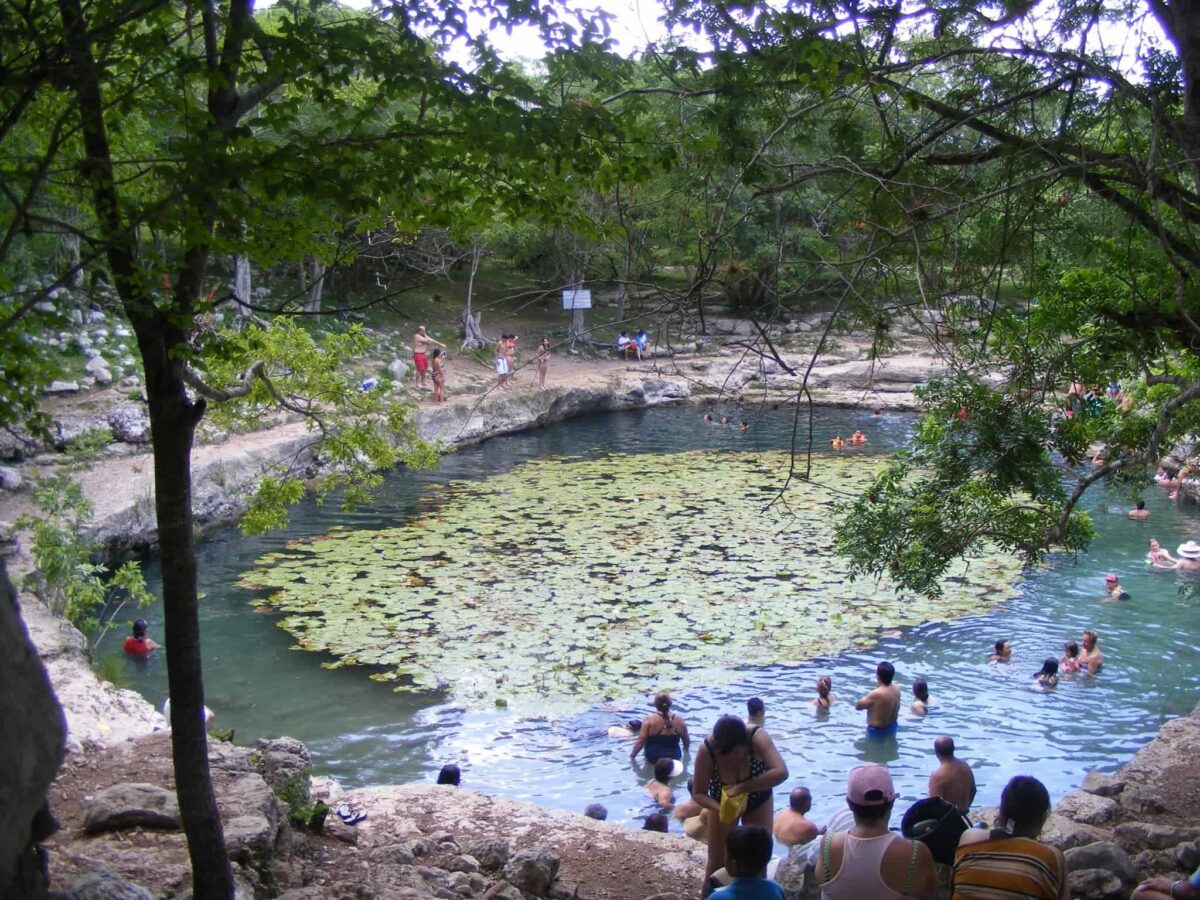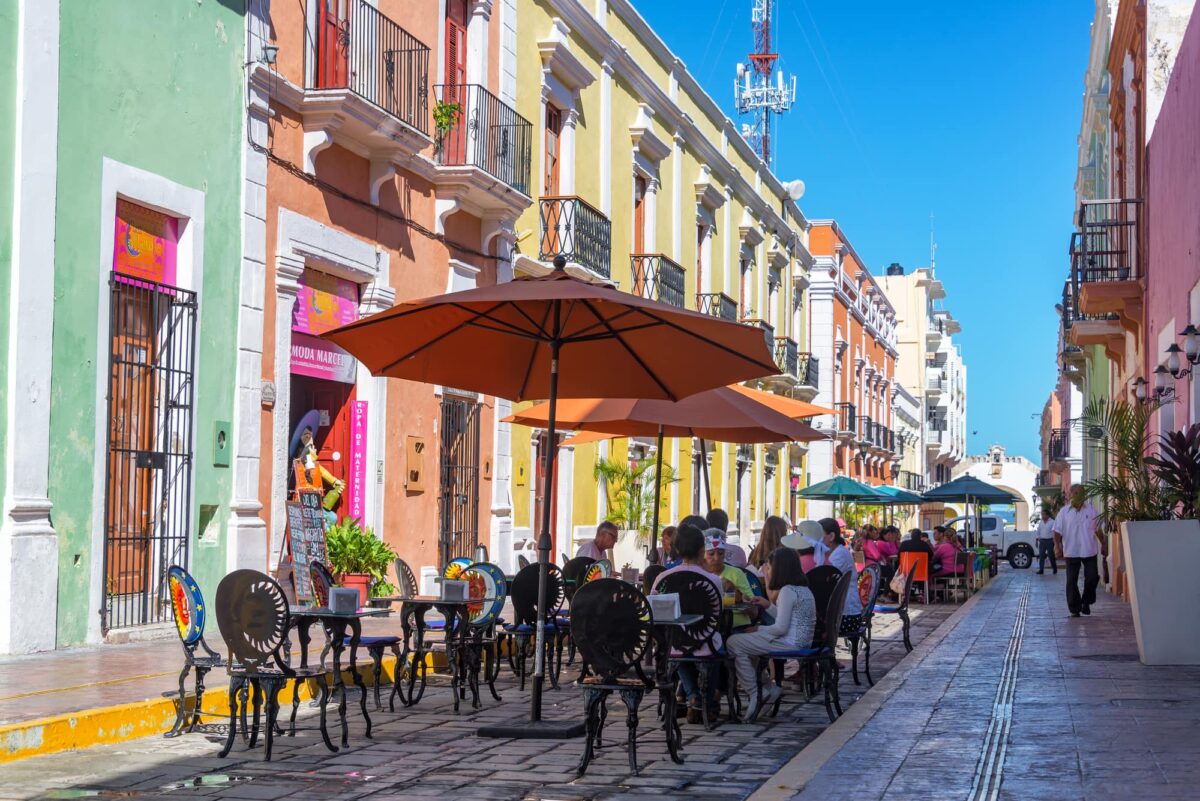Dia de los Muertos Skulls
The Day of the Dead Mexico
Calavera is Spanish for “skull” and in Mexico, it has a much deeper meaning. There is a long tradition of art depicting skeletons in Mexico. Calaveras means skulls and by extension of course skeletons. Dia De Los Muertos is not celebrated on Halloween and it is not tied to this now secular day of trick or treating. This is just one of the many Mexican festivals you will find across the country.
All over Mexico, people paint their faces as incredibly beautiful skulls to celebrate the Day of the Dead. The skull face paint represents their ancestors who have passed on and celebrates the beauty and necessity of death. La Catrina is the name used by the women of Mexico when they paint their faces to resemble skulls.

In the late 1800s and early 1900s, Jose Guadalupe Posada began creating engraving and etchings to illustrate the newspapers of the day called broadsheets. His prints of skeletons doing everyday jobs are still called Calaveras today.
Xyuandbeyond is reader-supported. When you buy through links on our site, we may earn an affiliate commission. You can read my privacy policy here.
Meaning of the Dia de los Muertos Calaveras
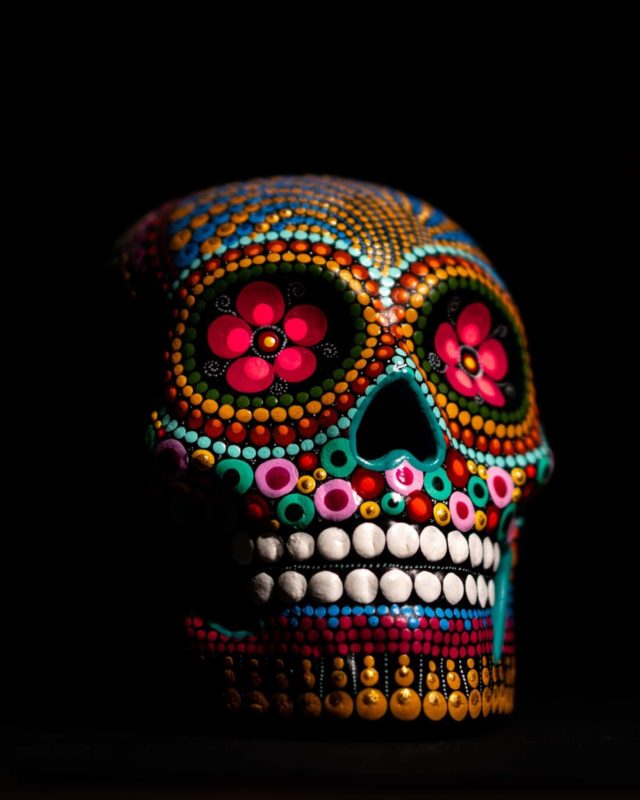
Posada was the first to sketch the skeletons wearing contemporary clothes and become part of the day to day scenes’ that portrayed the upper-class Mexican. Of course, the Calaveras were usually the servant girl wearing cast-off clothes. Calavera etchings were generally of women because in Mexico death is portrayed as a woman (la Muerte).

Posadas’s most famous etching is of La Calavera Catrina who has become an icon in Mexico representing the Dia De Los Muertos. The name La Calavera Catrina is derived from Diego Rivera’s work Dream of a Sunday afternoon along Central Alameda.
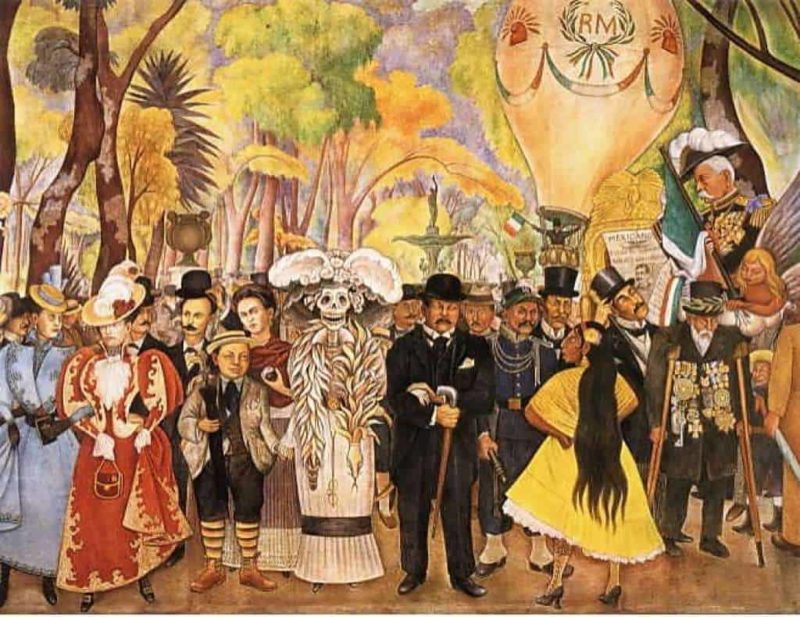
The mural portrays over 400 years of Mexican history and it includes Posada, Frida Kahlo and himself. La Catrina has been given a body and a very expensive outfit; it is believed Rivera depicted Calavera this way to indicate that death applies to all of us including the rich. The culture of La Calavera Catrina is also politically inclined as it has ties to The Porfirio Diaz regime, whose accomplishments include modernizing Mexico in spite of the existing governments’ repressions and corruption.
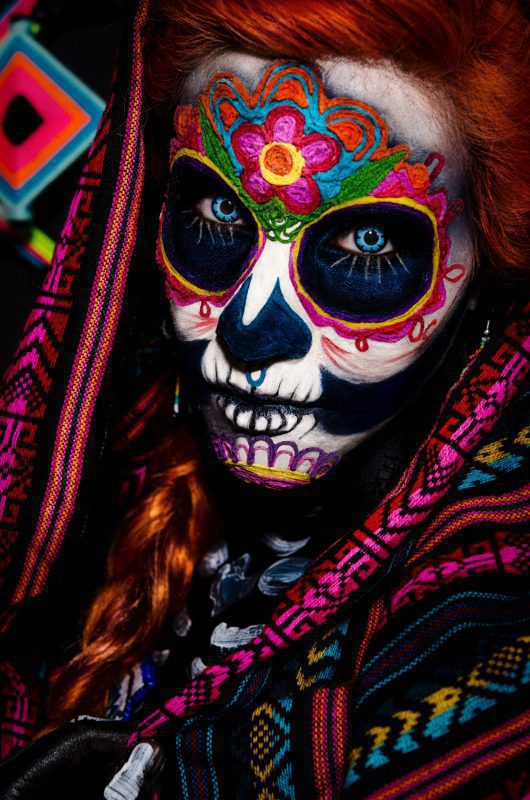
So the Catrina was used to symbolize the differences between the upper and lower classes. The thought is that we are all really just a bag of bones beneath our fancy clothes and that the rich have nothing on the rest of us. In societal terms, it was also a new way of looking at class and wealth within a society that was rapidly changing. These days La Catrina has come to represent the Day of the Dead and the images of her and other skeletons are now an art form in Mexico.
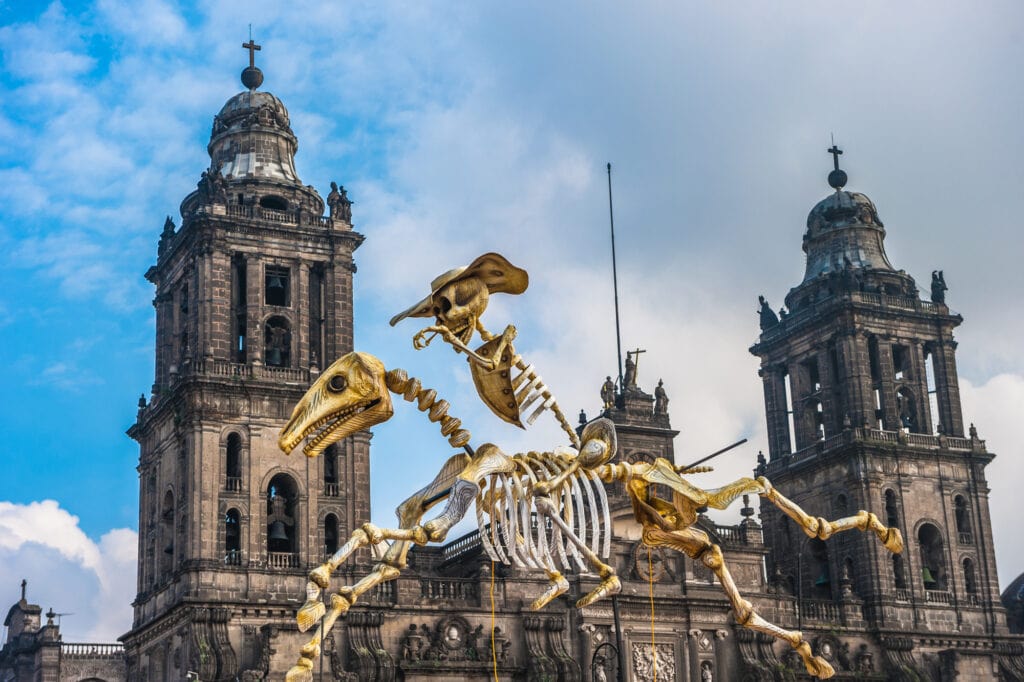
Day of the Dead Skulls
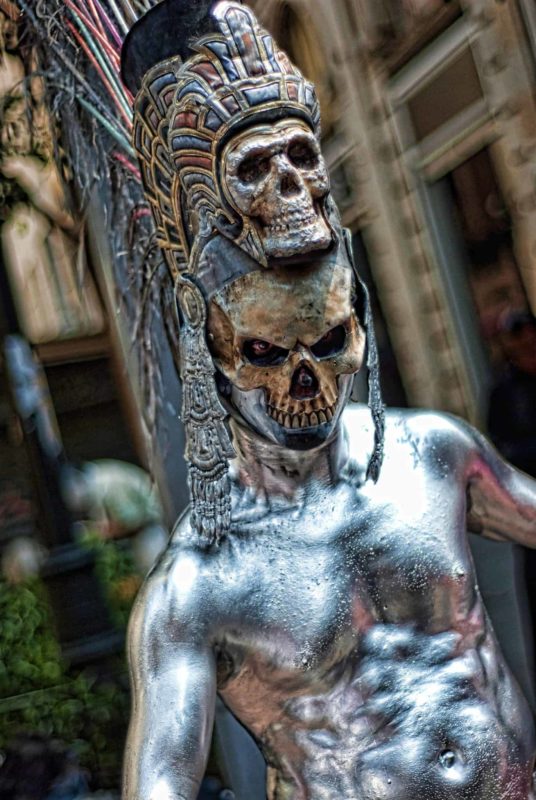
Calavera in Mexico can mean one of three things. During Los Dias de Los Muertos you will see a huge variety of edible sugar skulls. These were made originally from sugar and now can be found in anything sweet from chocolate to decorated cookies. You will also see Dia de los Muertos skulls on the Calavera candles decorating the graves of family members. Be aware that many of these sugar skull candies are decorated with non-edible sequins, rhinestones, and other items that should not be eaten.
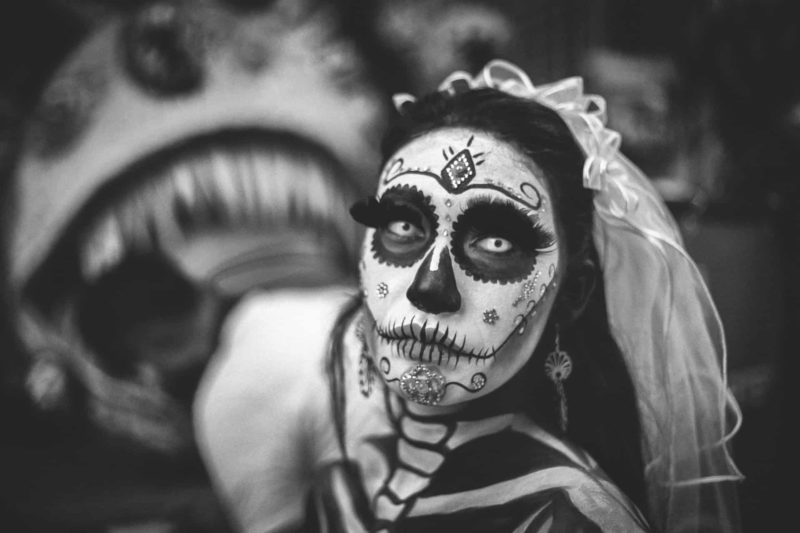
Calaveras are also funny poems that have at their core jokes about politicians, famous people or simply family members. Finally, Calaveras can be spotted on everything from t-shirts to designer clothing, graffiti murals, tattoos, incredible Huichol art, sculptures and anything in between.
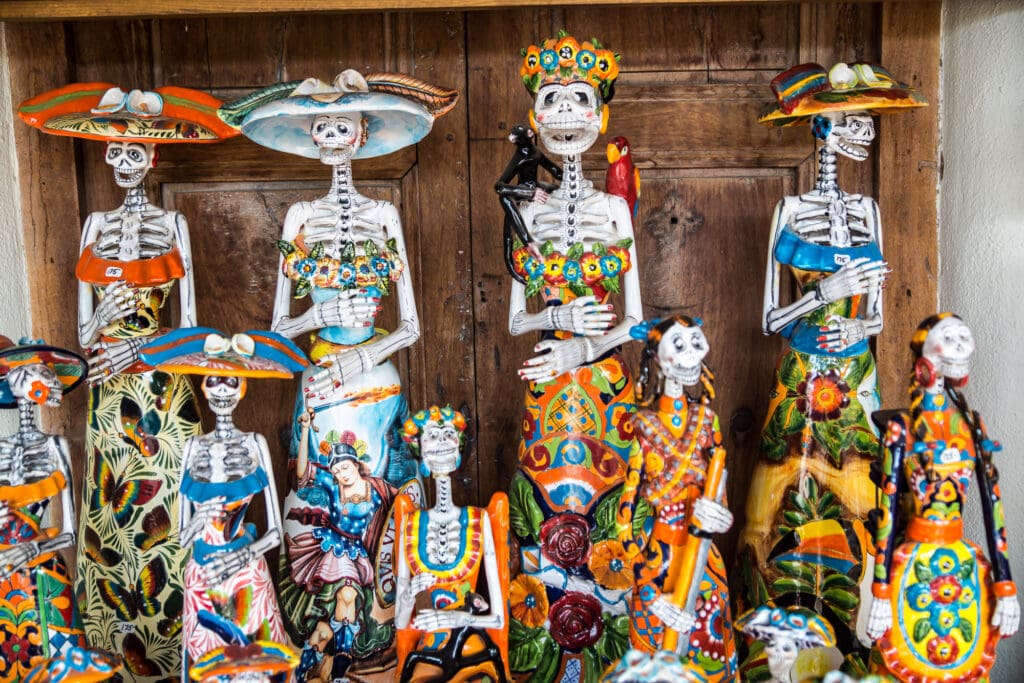
Calaveras & Sugar Skulls
These days many people are choosing to get a Sugar Skull tattoo for various reasons, artistic skull tattoo designs can be colourful, or done in black and white and used to commemorate loved ones. Or simply because they contain so many hidden meanings and are essentially a symbol of the celebration of life.
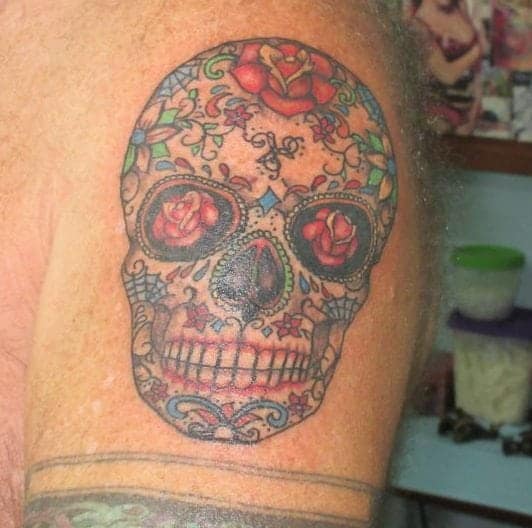
The skull tattoos incorporate many meaningful images and icons for those who get one. Flowers are often incorporated into Dia de los Muertos skull designs. This mixing of the skull, associated with death with flowers, is a symbol in western culture associated with life and love. The meaning of el Dia de los Muertos is not only to remember the dead but also to overcome the fear of death and celebrate life!

In Mexico, the Aztec culture believed life on earth to be something of an illusion – death was a positive step forward into a higher level of conscience.
For the Aztecs, skulls were a positive symbol, not only of death but also of rebirth.
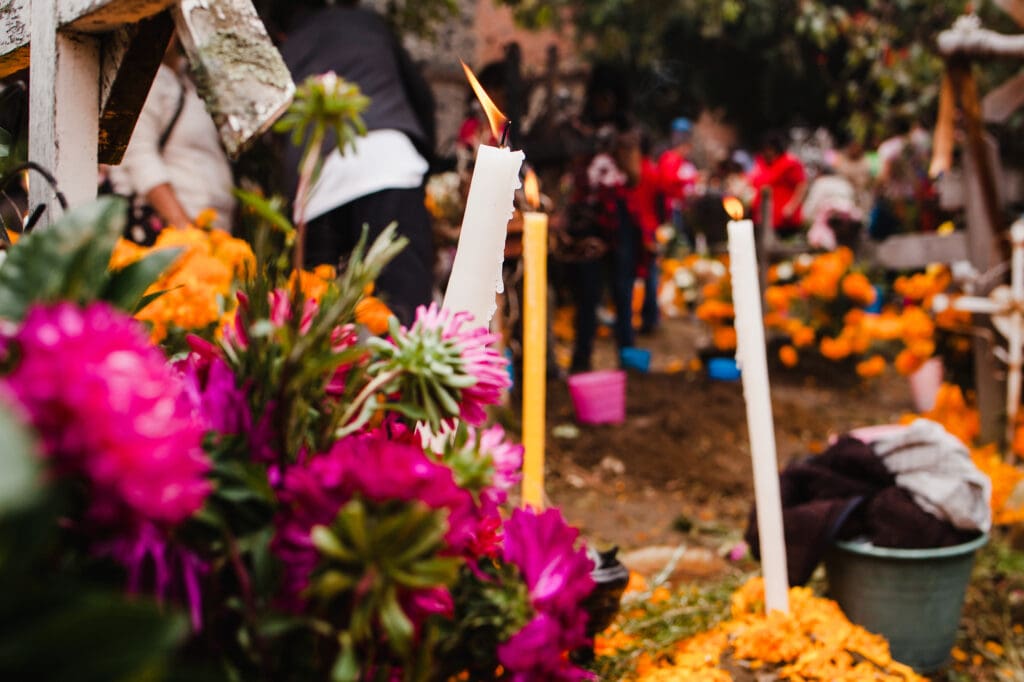
Marigold is believed to be the flower of the dead. A lot of decoration is done around the eyes with these flowers to symbolize life; cobwebs act as a contrasting element representing death. Many times, burning candles are placed inside the eye circle, symbolizing remembrance.
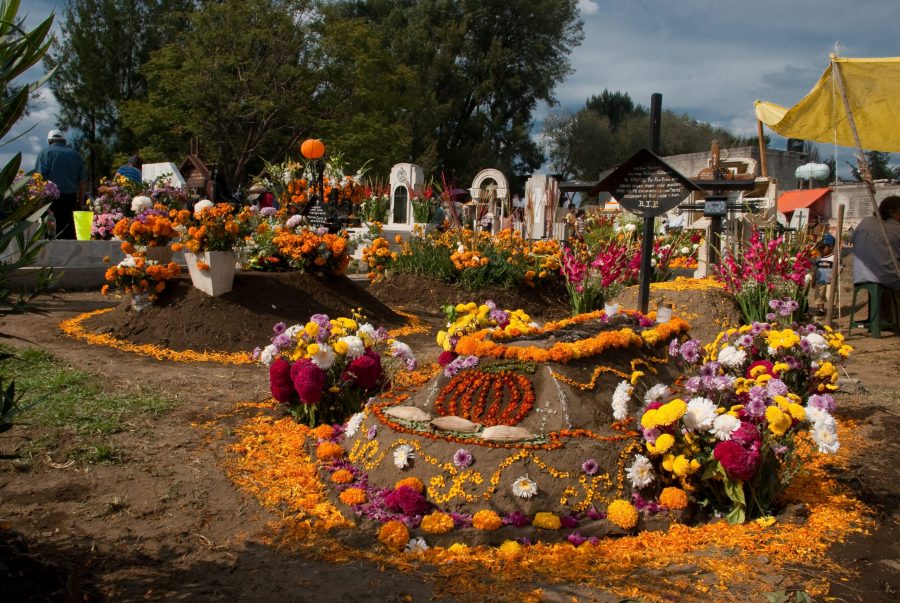
Dia de los Muertos – Day of the Dead in Mexico
Catrinas and Calaveras, sugar skulls, skeleton candy, bright colours and celebrations similar to Halloween are how people think of the Day of the Dead or Dia de los Muertos. People are still shocked at the way that death is celebrated here in Mexico. The Day of the Dead is actually a week of joyous celebration because the dead get to come back and celebrate with their families and loved ones. The Nobel Prize-winning Mexican writer Octavio Paz explains in his book Labyrinth of Solitude.
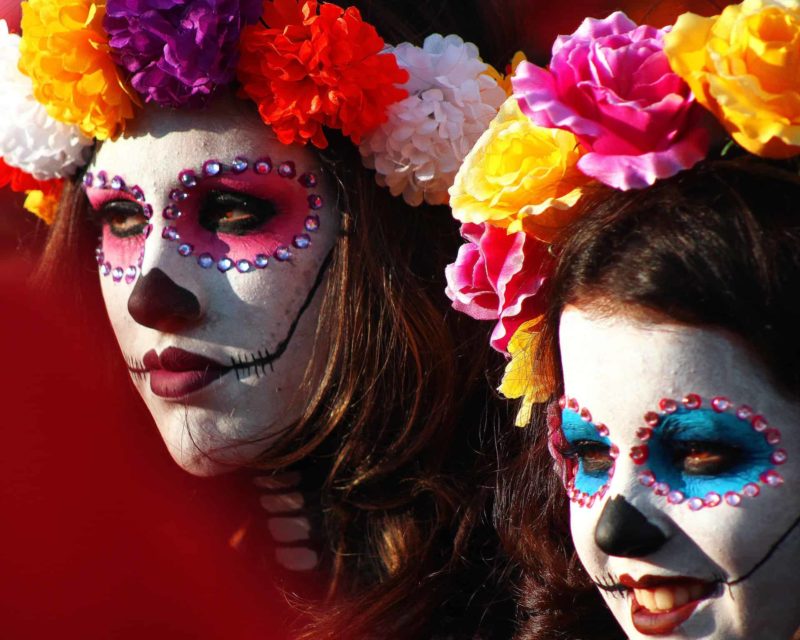
“The Mexican … is familiar with death, jokes about it caresses it, sleeps with it, and celebrates it. True, there is as much fear in his attitude as in that of others, but at least death is not hidden away: he looks at it face to face, with impatience, disdain or irony.”
The Day of the Dead that is celebrated throughout Mexico for centuries before Christianity came in. Prior to the Spanish indigenous peoples of central and Latin America celebrated and paid their respects to those who had passed away. Anthropology texts state that the Aztecs had a month-long festival that was dedicated to the goddess Mictecacihuatl who was the ruler of the afterlife.

Christianity in its efforts to ensure the “pagans” were “saved” moved the dates to October so that the celebration coincided with the Catholic holidays of All Souls Day and All Saints Day. This early cultural appropriation is ongoing and can be considered offensive when Westerners take over the symbols and cultural identity of this deeply held Latino sacred belief system.
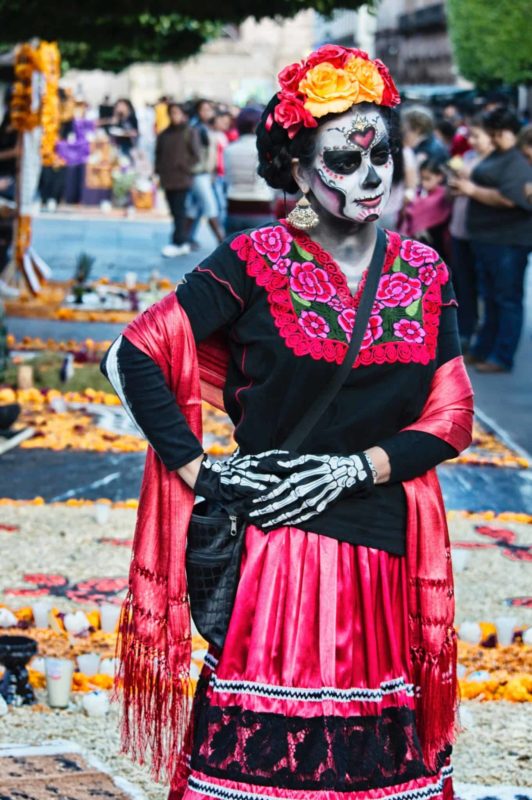
Here in Mexico, there are as many types of celebrations and activities as there are regions and cities. November 1st is dedicated to Dia De Los Inocentes which is the day to honour and pay tribute to the innocents, according to legend the gates of heaven are opened on October 31st at midnight and the spirits of all the angelitos (children) are allowed to reunite with their families for 24 hours. November 2nd is Dia De Los Muertos the day for honouring and celebrating the lost adult lives.
Cemeteries are cleaned up and altars are built on gravesites or at home. Mexicans make ofrendas (offerings) of favourite foods, toys anything that might help the guide the souls to their loved ones waiting at the altars.

Sugar skulls, pan de Muertos, pictures, toys and drinks like horchatas, water, and pop are set out for the little ones on November 1st. On November 2nd the altars sometimes gain a little tequila or mescal and cigarettes are for the adults. Wild marigolds and cockscombs adorn the altars along with candied sugar skulls, little skeletons and lots of candles.

This is not an inexpensive holiday for Mexican families, many still live in deep poverty and in rural areas wages are hard to come by. Some will spend several months’ income to honour their dead as they believe that contented spirits will give good luck, wisdom and protection to the living.

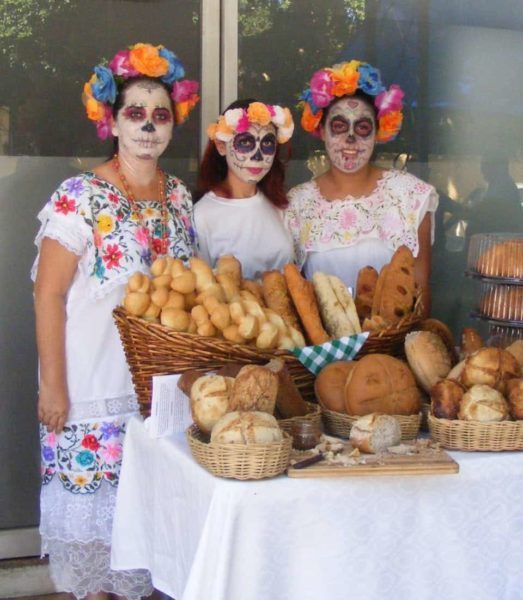
On November 2nd in the afternoon is when whole families move to the cemetery. The tombs are cleaned and decorated, the village band or musicians entertain and folks reminisce and tell stories of the loved ones who have passed. This tradition is important for keeping the villages close; the family and the community are vitally important to Mexicans and as such is a cultural celebration rather than a religious one.

Interested in moving to Mexico? Here’s all the information you need to make that decision
Do you have a Day of the Dead or Sugar Skull Tattoo? – Let’s see your pictures.



